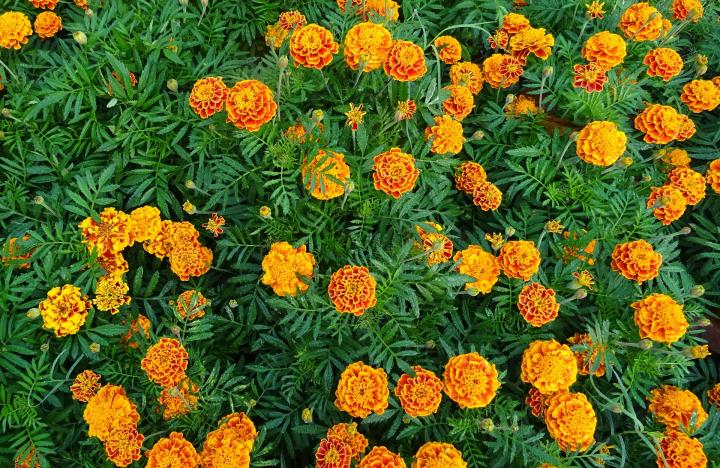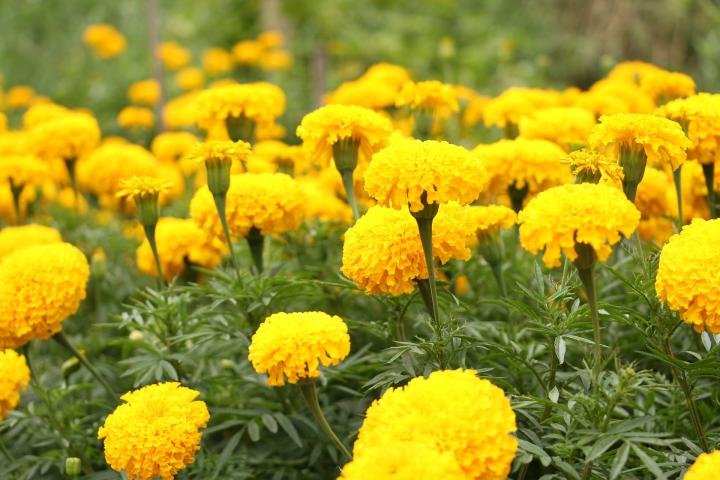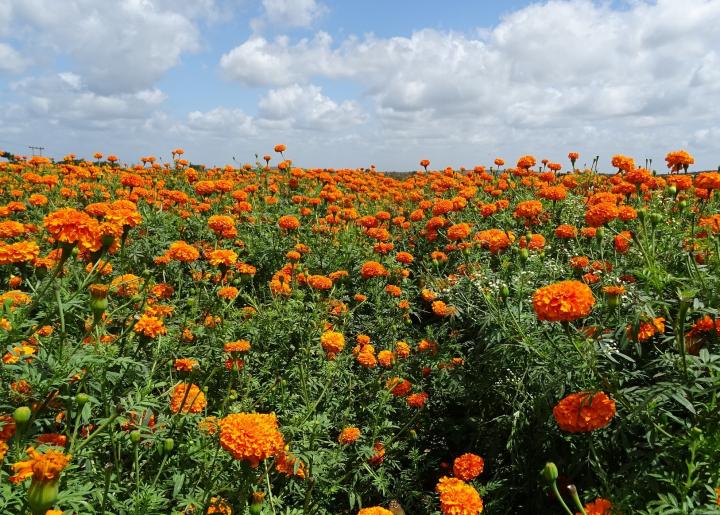
Photo Credit
Pixabay
Subhead
Sunshine on a Stem: Learn Why to Add These Sunny Blooms to Your Garden!
Read Next
Types
Marigolds have been stereotyped, but they offer tremendous variety. Both the American and French marigolds are generally aromatic, too, although some folks find the scent to be a bit overwhelming. Keep that in mind when choosing a planting site.
Marigolds have daisy- or carnation-like flower heads produced singly or in clusters. Although there are some 50 species, most we see in the garden are one of the following:
- Tagetes erecta (aka African marigolds, American marigolds, or Mexican marigolds): This species is the tallest and most upright marigold, reaching 3 to 4 feet in height and producing large, full flowers. According to Nate Dalman of the University of Minnesota Extension, “Despite the names, African marigolds did not originate in Africa and instead are called that because they were first imported to Europe via a trade route that passed through northwest Africa.” They’re native to Mexico and Central America and will thrive even under drought-like conditions.
- T. patula (aka French marigolds): This species tends to be smaller, bushier, and more compact than T. erecta. They are often wider than they are tall. Elegant and eye-catching, they have relatively demure flowers and usually grow from 6 inches to 2 feet tall. They are better suited to rainier conditions than the other Tagetes species.
- T. tenuifolia (aka signet marigolds): These petite marigolds do well in hot, dry sites and make for a beautiful edging plant. They rarely reach more than a foot in height.
French Marigolds (T. patula)
- ‘Little Hero’ Series: 7-inch-tall plants with large, double carnation flowers in 7 color combinations of maroon, orange, and yellow.
- ‘Hero’ Series: 10-inch-tall plants with double carnations, large (2-inch-wide) flowers in 7 different combinations of yellow, orange, and maroon.
- ‘Bonanza’ Series: 2-inch-wide, double carnation flowers in 5 different combinations of yellow, orange, and maroon on bushy, compact 8-inch-tall plants.
- ‘Aurora’ Series: 1-foot-tall plants with wide-petaled, anemone-like flowers in shades of maroon, yellow, and orange.
- ‘Janie’ Series: Early blooming. 8-inch-tall plants are perfect for container growing. Double carnation type flowers in 6 different combinations of yellow, orange, and maroon.
- ‘Boy O’ Boy’ Series: 6-inch-tall prolifically flowering plants with flowers in shades of maroon, yellow, and orange

American/African Marigolds (T. erecta)
- ‘Jubilee’ Series: 2-foot-tall plants with dense, double flowers in shades of yellow and orange.
- ‘Gold Coin’ Series: 1½- to 2-foot-tall plants with large (5-inch-wide) double blooms in gold, yellow, and orange.
- ‘Safari’ Series: 1-foot-tall plants with flat-topped, large flowers in shades of maroon, yellow, and orange.
- ‘French Vanilla’: 3-inch-wide flowers are pure creamy white. Minimal scent. Plants are 1½ to 2 feet tall.
Where to Buy Marigolds
Gardening Products
Under your planting tips section, you say to fertilize weekly, but under the care section you say don't fertilize. Thoroughly confused here! So if you don't mind, which is correct.
What could be eating my marigolds? A few plants have no leaves left!
Consider wood chucks. I left some tall marigolds on my deck ,
walked to the garden to plant other items,and returned to discover marigold stumps. A fat woodchuck lived here at the time.
Sand and egg shells are a standard recipe for snails and slugs, but they are almost useless. Over many years, I have found only two things that work. Pellets and "harvesting" the pests by hand at night. But, it's only a problem while the seedlings are small. Once they develop, the pests will leave them alone.
We moved into a rental last summer, and it has a long raised marigold bed. Our landlords said they just let the marigolds die and re-seed on their own each year, and that they perform no maintenance. However, since marigolds are annuals, I should be able to pull all the old dead foliage from last year without compromising the seeds, right? The dead stuff looks ugly hanging out in the flower bed, but I don't want to screw up their marigolds!
Marigolds are annuals but can also reseed in warmer climates. However, you can still pull the dead plants. If they reseeded, their seeds already fell. Or, you can look at the marigold seed heads and see if you can save them and direct seed.
Note: sometimes birds eat the seeds or they blow away or conditions aren't right for reseeding.
Normally, if you don't want to leave it to chance, you would gather the seeds once the pods have dried and save them; they easily grow by direct sowing next year.
At this point, we'd pull the plants and then plant new seeds. Frankly, marigolds are one of the easiest and cheapest seeds to grow. That's why they are a common flower for children to grow. Follow our planting information on this page.
Planted 10 marigolds on my garden, they receive full sun, but the temperature at night is 50s. Tampa fl. should I have waited?
- « Previous
- 1
- 2
- …
- 10
- Next »











Comments